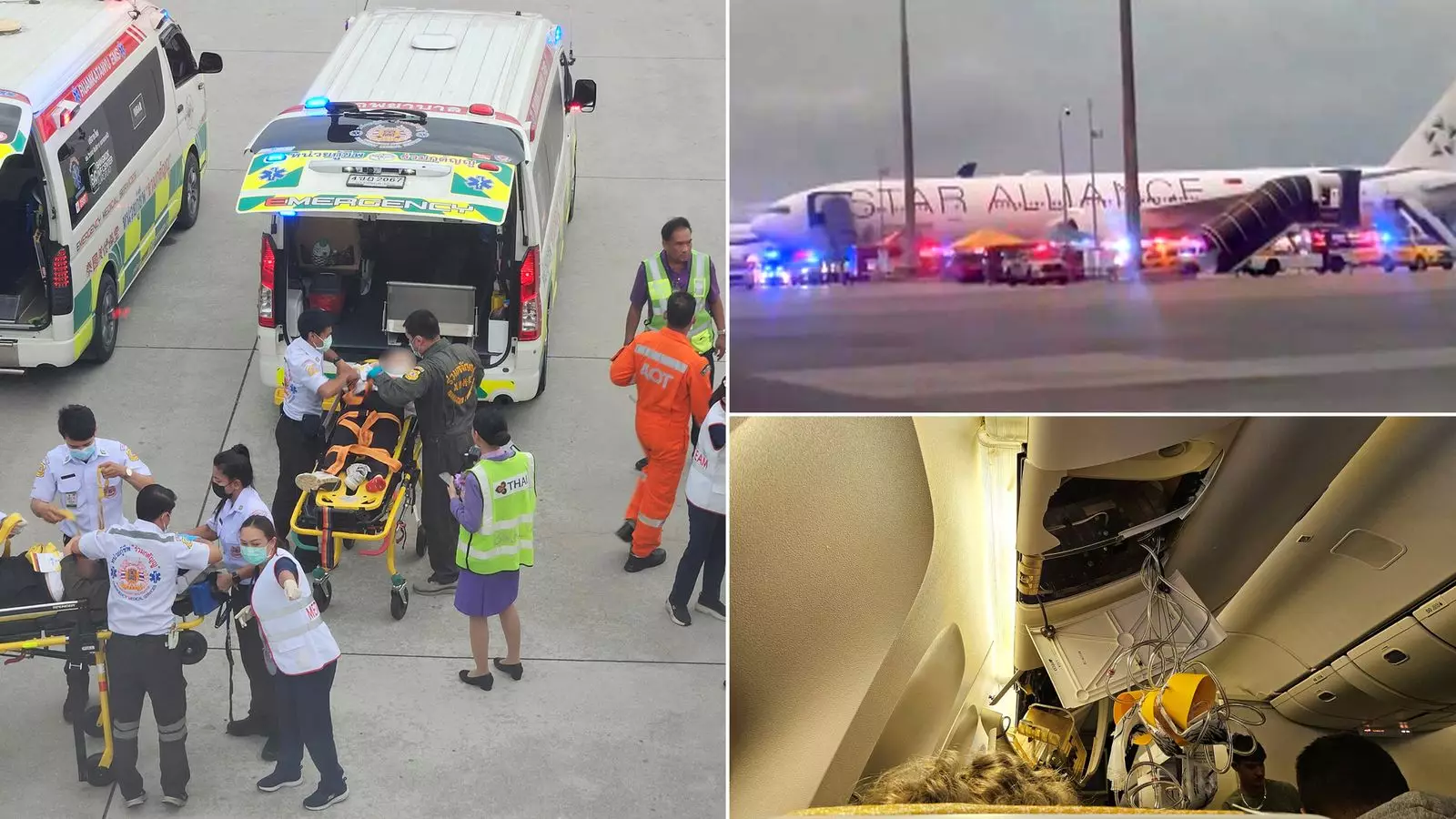In a recent tragic event on a London-Singapore flight, a 73-year-old British man lost his life due to a suspected heart attack caused by sudden extreme turbulence. This incident resulted in numerous injuries among the passengers, with reports of people being “launched into the ceiling” and overhead lockers on the Singapore Airlines flight SQ321 from Heathrow. The plane was forced to make an emergency landing in Thailand, where seven individuals suffered serious head injuries and 30 others were taken to the hospital.
Passenger Dzafran Azmir, 28, described the chaos that ensued when the turbulence hit, stating that the aircraft started tilting up and shaking, leading to a dramatic drop. He mentioned how those not wearing seatbelts were launched into the ceiling, hitting their heads on overhead baggage cabins. Andrew Davies, another passenger, highlighted the importance of wearing seatbelts during such incidents, noting that those who were restrained did not sustain injuries.
The pilot declared a medical emergency and landed in Bangkok following the turbulence over the Irrawaddy Basin, while the head of Bangkok airport confirmed the death of the 73-year-old British man from probable cardiac arrest. The airport boss attributed the incident to an “air pocket” and mentioned that it occurred while passengers were being served breakfast. Singapore Airlines expressed its condolences to the deceased man’s family and apologized for the traumatic experience faced by passengers and crew members.
Turbulence-related injuries are reported to be the most common type of incidents on passenger planes, according to a study by the US National Transportation Safety Board. These injuries accounted for more than a third of accidents between 2009 and 2018, highlighting the significant risk posed by turbulence during flights. However, the study also noted that such incidents rarely result in aircraft damage, emphasizing the importance of passenger safety measures during turbulence.
The tragic incident on the London-Singapore flight serves as a reminder of the potential dangers associated with in-flight turbulence. It is essential for passengers to follow safety protocols, including wearing seatbelts at all times, to minimize the risk of injuries during such occurrences. Airlines must also prioritize passenger safety and provide adequate training for crew members to handle emergency situations effectively. By implementing strict safety measures and protocols, the aviation industry can enhance the overall safety and well-being of passengers during flights.


Leave a Reply